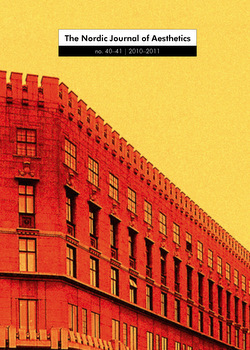The Making of Cultural Heritage
DOI:
https://doi.org/10.7146/nja.v22i40-41.5203Keywords:
Sociology of the arts, cultural heritage, preservation, cultural values, patrimonial functionAbstract
How does an artefact enter the corpus of national cultural heritage? The answer to this question offers a pragmatic understanding of the reasons why the expansion of national corpuses has been so widespread, generation after generation and especially during the last one. Of course, there are alsomore general “societal” or “cultural” reasons for such a worldwide phenomenon: a number of explanations have already been proposed by philosophers, historians, sociologists, anthropologists. However, one should not underestimate the effects of the inventorial techniques and methods of description used by the specialists of heritage, in that they tend to elevate the level of precision and of specialisation, hence to enlarge the criteria and to increase the number of artefacts worth entering their corpus. A close study of these actual criteria, through a survey conducted according to what is now called “pragmatic sociology” in France, allows us a deeper understanding of what defines cultural heritage, and of the effective values on which it relies: that is, the axiology of cultural heritage. Switching from “why” to “how”
Downloads
How to Cite
Issue
Section
License
Authors who publish with this journal agree to the following terms:
- Authors retain copyright and grant the journal right of first publication with the work simultaneously licensed under a Creative Commons Attribution License that allows others to share the work with an acknowledgement of the work's authorship and initial publication in this journal.
- Authors are able to enter into separate, additional contractual arrangements for the non-exclusive distribution of the journal's published version of the work (e.g., post it to an institutional repository or publish it in a book), with an acknowledgement of its initial publication in this journal.
- Authors are permitted and encouraged to post their work online (e.g., in institutional repositories or on their website) prior to and during the submission process, as it can lead to productive exchanges, as well as earlier and greater citation of published work (See The Effect of Open Access).




